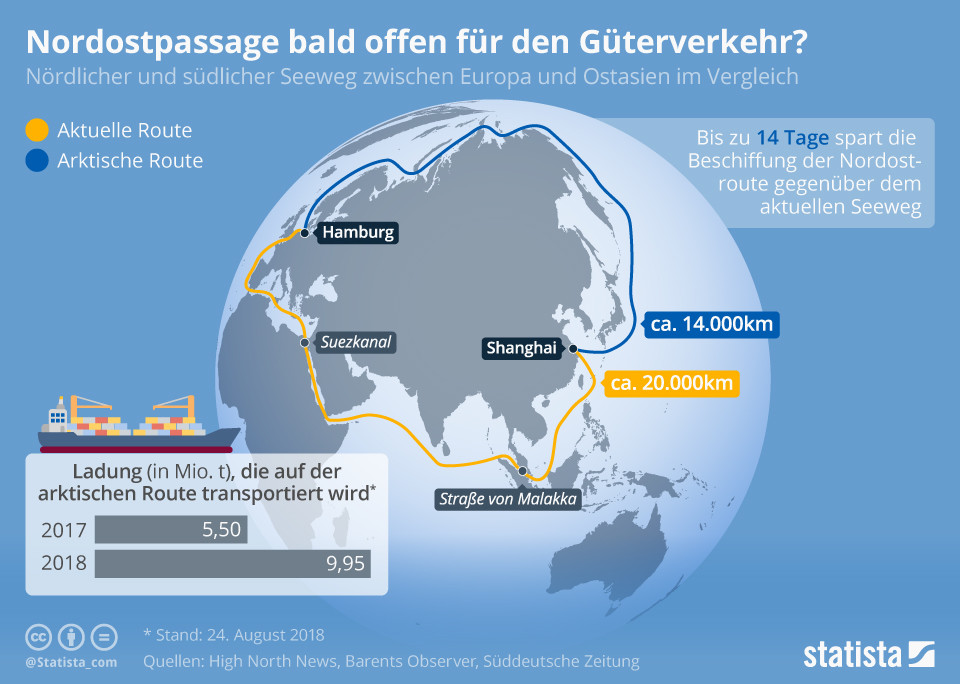When Adolf Erik Nordenskiöld traveled from Gothenburg to Japan in 1878, he was the first person to choose the arduous route across the Arctic Ocean for this journey. At that time, the expedition lasted over a year and was extremely risky.
At the beginning of last week, another ship set sail with the intention of navigating the Northeast Passage. This time, it is a container ship belonging to the Danish shipping company Maersk. It departed from Vladivostok, loaded electronics in Busan, South Korea, and is expected to reach its destination, St. Petersburg, on September 9th. The Venta will cover 14,000 kilometers, mostly through freezing temperatures. This is 6,000 kilometers less than the currently preferred route via the Strait of Malacca and the Suez Canal.
However, the project is not economically viable – at least not yet. While the Northeast Passage saves up to 14 days of travel time, a significant amount of ship diesel, and the fees for transiting the Suez Canal, it requires the escort of Russian nuclear-powered icebreakers, which drives up the costs of the voyage. Furthermore, the passage is currently only navigable for a few months of the year; it is not expected for another ten years or so that the melting of the polar ice will have progressed sufficiently for freight transport via the North to become economically viable.


